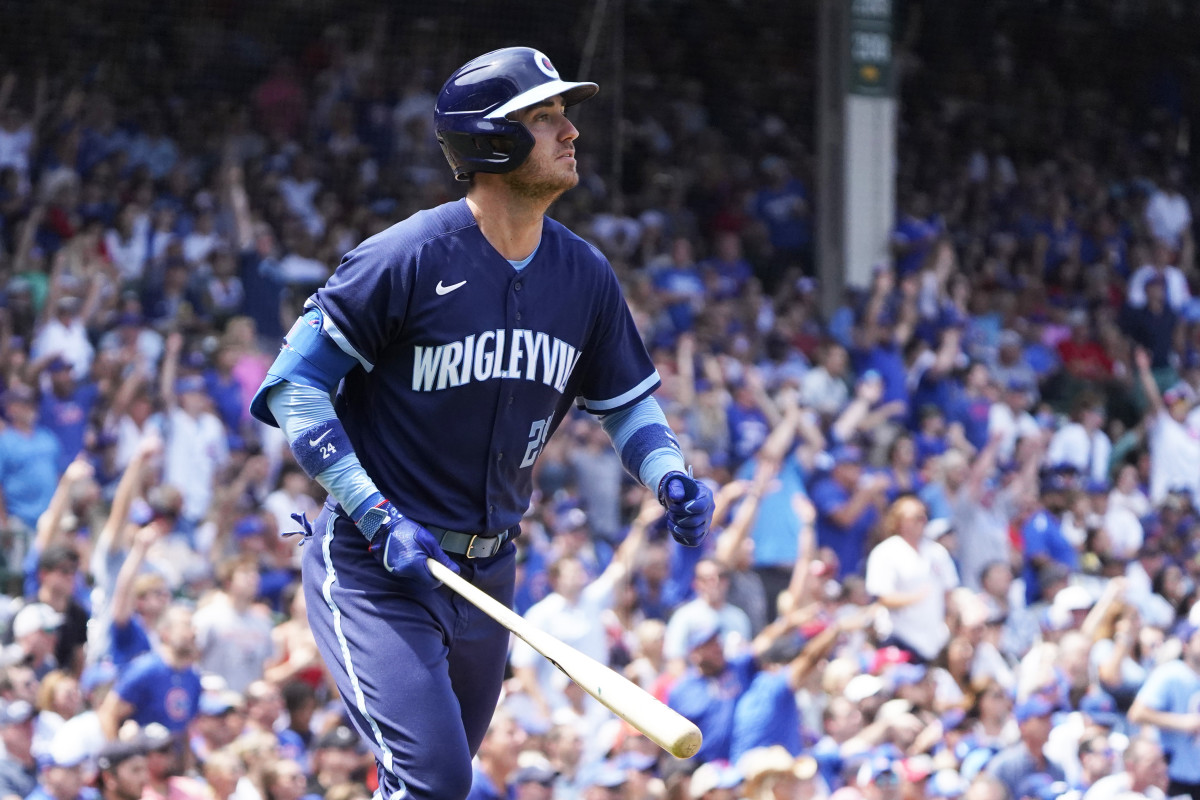SF Giants free agent fit profile: Chicago Cubs OF/1B Cody Bellinger

It’s been a sentiment harped on for quite some time by SF Giants fans and individuals within the organization: the need for athleticism is excruciatingly pressing –– and has been for several years now. As a whole, the free agent position player market is rather weak –– aside from our favorite two-way unicorn and a few other difference makers. But on the surface, Cody Bellinger could fit the necessity.

When it comes to free agent pursuits, Bellinger is far from the same wavelength as Shohei Ohtani –– most humans aren’t –– and Aaron Judge. It’s important to note that he’s not the franchise-altering superstar the Giants have been craving, but his recent production and potential can’t be ignored as a possible free-agent target.
Bellinger is a well-known commodity around the league after a six-year career with the Los Angeles Dodgers that produced NL Rookie of the Year honors in 2017 and an NL MVP trophy two years later. The left-handed slugger fizzled out in Southern California after two poor offensive years and the Dodgers non-tendered him following the 2022 season.
To rebuild his value, Bellinger inked a one-year, $17.5 million deal with the Chicago Cubs –– a chance to place all possible bets on himself. The Giants could’ve signed him in the same effort to reestablish his value, but Chicago offered the amenity of the hitter-friendly Wrigley Field. The move worked as Bellinger added 26 homers, 96 runs batted in and 20 stolen bases while slashing .307/.356/.525 with a .881 OPS.
Bellinger also hit well enough to be platoon-proof. He slashed .337/.388/.596 with a .984 OPS against left-handed pitching in 183 plate appearances, the type of production that trounced his career norms and completely mirrored those splits accumulated during his MVP campaign a few years ago –– .280/.386/.596 with a .982 OPS against southpaws in 2019.
A tool he’s never abandoned, solid versatility, remained intact with over 400 innings logged at first base and over 680 in center field.
In a surprising turn of events, Bellinger –– usually equipped with a long-winded swing built for damage and power –– drastically changed his approach by lowering his strikeout rate from 27.3% in 2022 to a whopping 15.7% in 2023. While his contact peripherals skyrocketed, his average exit velocity and barrel rate dropped.
In essence, Bellinger stopped swinging through as many pitches and became among the top ten toughest hitters to strike out in the National League –– quite the transformation.
There is a glaring question mark about Bellinger’s bounce-back that will likely weigh on every organization that plans on pursuing his services: is this sustainable or was this fluky?
It’s a fair question. Remember, it wasn’t too long ago that the Dodgers –– an organization that prides itself on trailblazing the new age-hitting revolution –– essentially gave up on trying to fix him.
He was the worst hitter in baseball by a large margin between 2021 and 2022. Among 151 players with at least 900 plate appearances during that span, Bellinger managed just a 69 wRC+.
At 28 years old, he’s considered to be on the younger side as far as free agents are concerned. Most pundits around baseball have placed him top-three in their rankings. Ben Clemens of FanGraphs predicts a six-year, $150 million deal. Jim Bowden of The Athletic sees him nabbing six years, $144 million. MLB Trade Rumors dropped a 12-year, $264 million prediction on everyone, truly an amount no sober baseball executive will even remotely discuss.
As for the fit in San Francisco, it’s there. It’s only a matter of how much Bellinger’s career inconsistencies could affect negotiations.
At the recent general manager meetings in Scottsdale, Giants president of baseball operations Farhan Zaidi –– who has a relationship with Bellinger going back to their time together in Los Angeles –– spoke to reporters and expressed his desire for the club to make upgrades in the middle of the field, specifically making center field a priority.
San Francisco ranked 23rd in defensive runs saved, 25th in UZR, and 29th in outs above average. Along with their defensive incapabilities at the position, their center fielders also couldn’t hit and ranked 23rd with an 86 wRC+.
Center field was mostly occupied by Luis Matos and Mike Yastrzemski last season. Matos needs to improve his strength and quickness while Yastrzemski is better suited for a corner outfield spot. Bellinger would be an upgrade over those two options in just about every category while also having the flexibility to play first base if needed.
The risk is significant for Bellinger, but the Giants have taken risks before by bringing in injury-plagued players to be offensive contributors, like Michael Conforto and Mitch Haniger. Granted, not for the price tag Bellinger is demanding, but a similar mindset.
If the Giants want to upgrade in center field, there aren’t a ton of options. They could trade for Tampa Bay Rays center fielder Manuel Margot. Maybe Dylan Carlson from St. Louis will be available. Mike Trout, perhaps? Kevin Kiermaier is also a fallback option, but his market could grow for teams scared off by Bellinger’s high price tag. Harrison Bader has the defensive ability to be platoon-proof. If things get rough, Michael A. Taylor could fill a hole, too.
Cody Bellinger may be the riskiest free agent out there, but he plays a position the SF Giants have badly needed production from for a long time. It would be surprising if they automatically dismissed the idea, but it would be even more stunning if they broke the bank for him.
